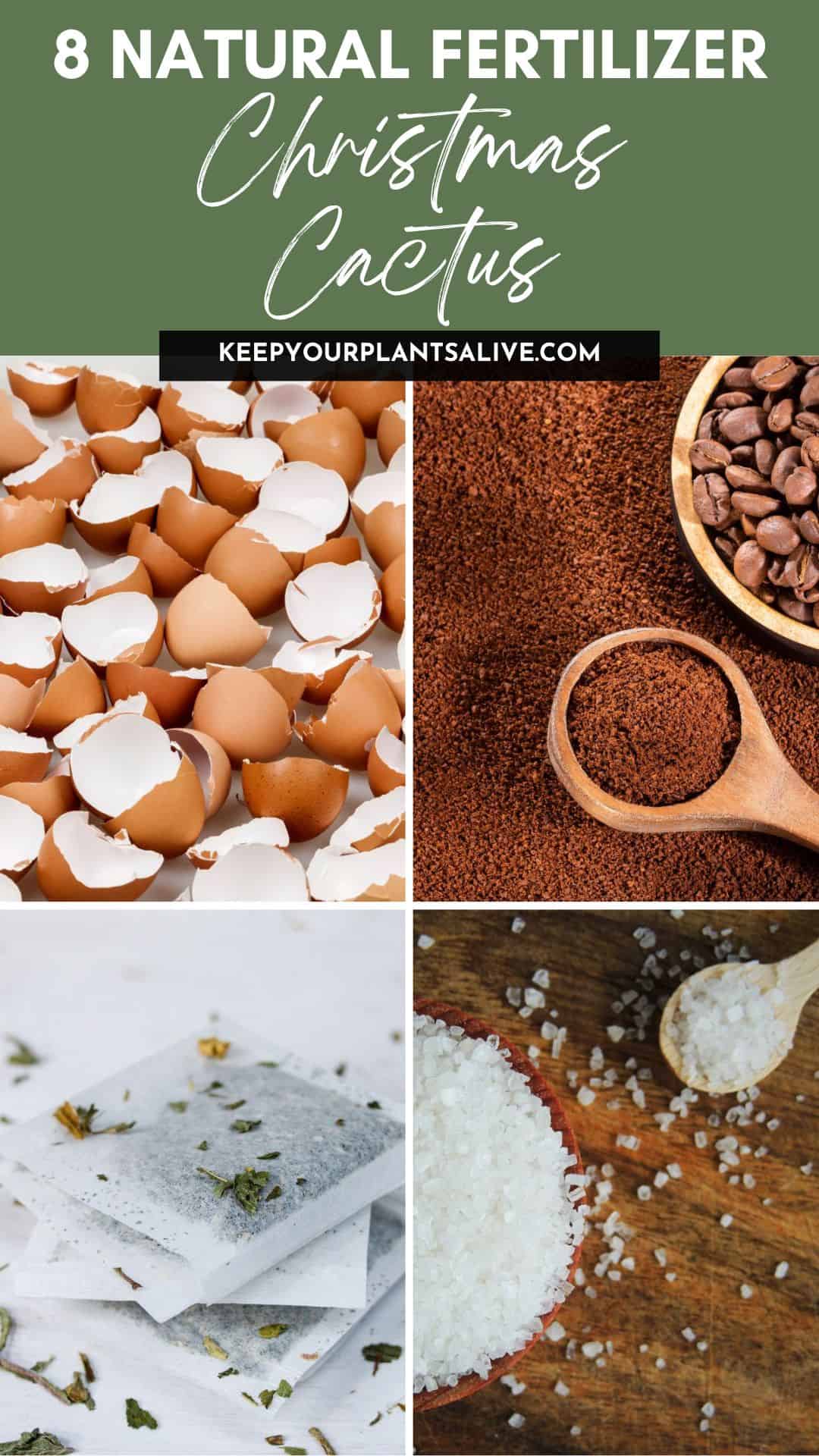Wondering what is going on with your holiday cactus? Here's what causes Christmas cactus turning purple, how to prevent it, and what to do about it if your plant turns purple!
Christmas Cacti are very popular household plants, especially around Christmas time.
f you’re a plant enthusiast, I am sure you have been tempted by a December grocery store display to grab one.
These are generally easy care plants, but noticing changes in its appearance might make you worried, especially if you see that the leaves are changing color.
However, you don’t need to worry! In this article, we’ll share the most common reasons for your purple Christmas cactus and explore how to fix the issue.
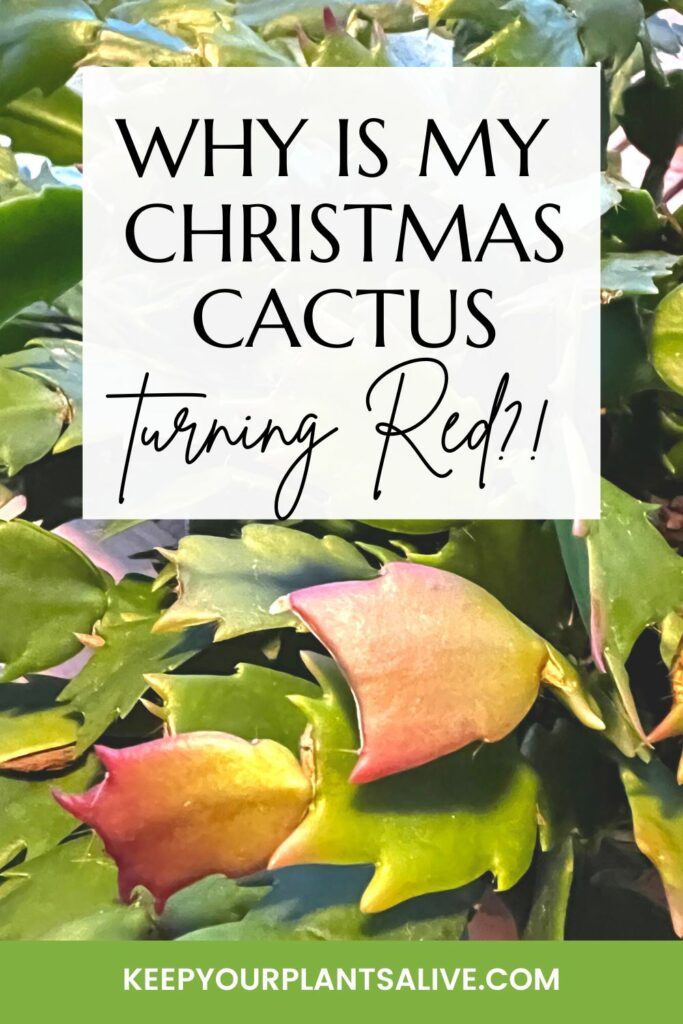
Free printable holiday cactus care guide
Join the (free!) KeepYourPlantsAlive+ community to access this exclusive printable plant care guide! Once you sign up, you can right click & save the JPG care guide. Or keep scrolling for more!

NOTE: I will use images of my Easter cactus, Thanksgiving cactus, and Christmas cactus in these holiday cacti posts. They have different leaf shapes but similar care needs!
Why does the Christmas cactus change colors?
When a Christmas cactus is stressed, such as exposure to bright light or high temperatures, its defensive system kicks in.
The production of defensive chemicals known as anthocyanins is one of the key reactions to this stress exposure.
These chemicals perform a variety of critical roles, including environmental stressor protection, herbivore defense, and engagement in growth and development processes.
Moreover, they are also the ones responsible for your Christmas cactus turning purple. Here’s what you need to know!
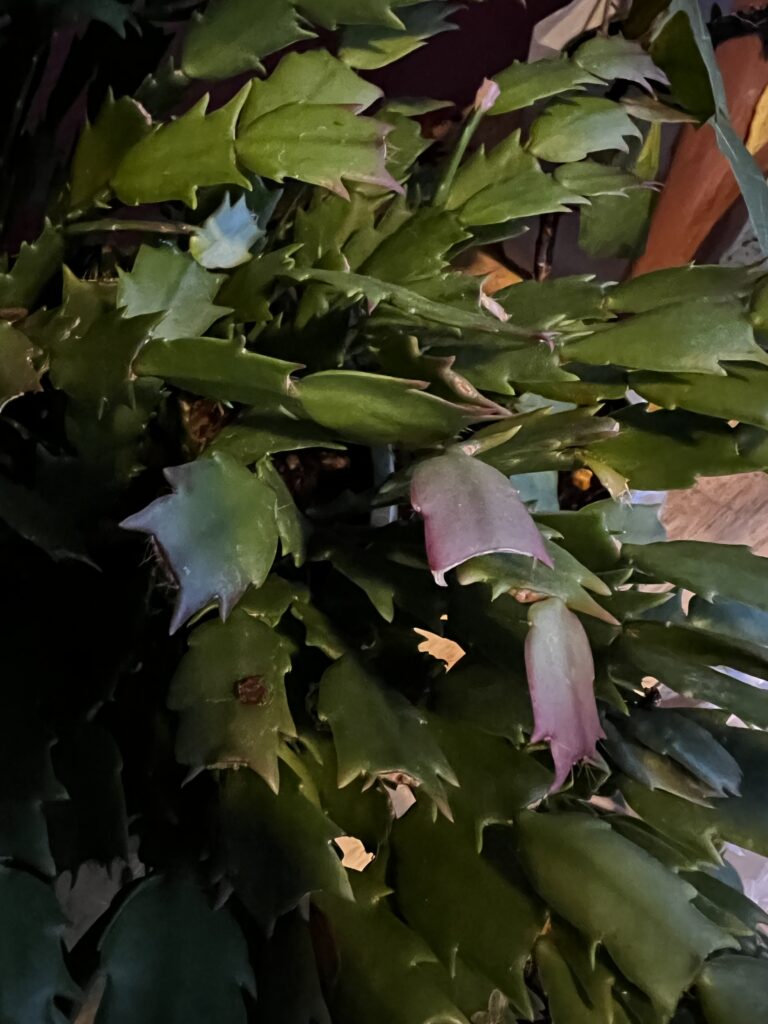
Why is my Christmas cactus turning purple?
Even though plants can’t speak, they most certainly can express unhappiness through their looks.
The presence of purple or red leaves on your Christmas cactus is a warning indication that something is off.
Numerous factors, including excessive sun exposure, uneven moisture levels, vitamin deficits, and temperature swings, might be the cause for this occurrence.
Understanding and effectively dealing with these challenges can help the Christmas cactus return to its lush green form.

Excessive Light Exposure
Excessive exposure to strong, direct sunshine is a common cause of Christmas cactus purple leaves.
In fact - this is what happened to my (Thanksgiving cactus)! I had it on my covered porch for the spring, then the light shifted, and it got just a bit too much of it.
In their native habitat, these cacti grow in the shadow of canopies, protected from ultraviolet (UV) radiation and soaking up the indirect light.
In response to prolonged exposure to sunlight, the plant releases defensive anthocyanins, which change the typical chlorophyll-rich green stems and creates purple leaves.
Solution: Place the Christmas cactus in a location with indirect bright light. The best spot for your succulent is near the eastern or north window, away from direct light.

Temperature Fluctuations
If you expose a succulent to a cold temperature for a while, then your Christmas cactus might turn purple.
Keep in mind that these cacti enjoy a moderate rainforest temperature range of 60°F to 90°F by day and slightly cooler at night, around 55°F to 65°F.
So, if you notice your Christmas cactus leaves turning purple, you need to check the temperature where it is.
It could be a draft or a vent blowing on it causing "extreme temperatures", too!
Solution: Moving the plant away from cold exposure and ensuring its location with a relatively stable temperature within the preferred range will help alleviate this stressor. Make daily temperature checks using a temperature and humidity tracker, until you get it stable.

Humidity
Christmas cactus grows in the humid rainforest in Brazil, so it likes moderate to high humidity, preferably around 50-60%.
The main problem is dry interior rooms during winter when the place has low humidity because of the heating.
Exposing it to dry conditions can make your Christmas cactus develop purple leaves.
Solution: Move your plant, as far as possible, from heating sources or air conditioners. Make a daily check on the humidity level until it gets better in line with your goal.
If humidity is low, then place a tray of water near it, or place the plant on a pebble tray. Open the bathroom door after a hot shower to spread the moist air, or place it outdoors after a rainstorm.
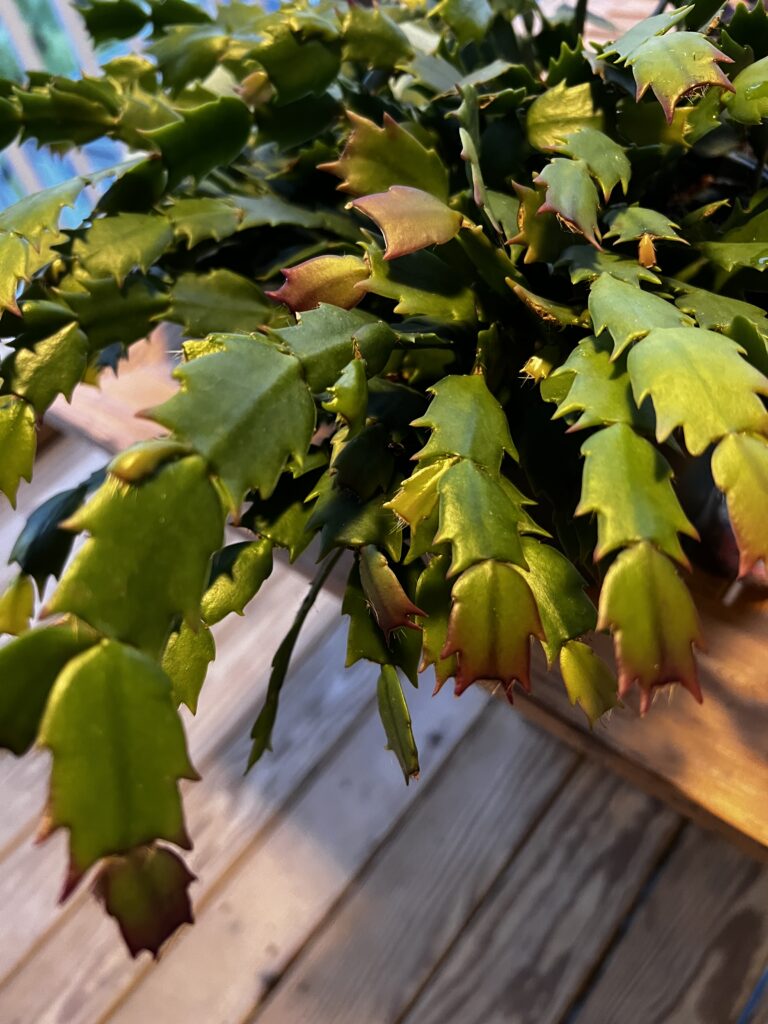
Lack of nutrients
Three fundamental nutrients are crucial for plant growth. The first one is phosphorus, which is essential for energy transfer. The couple others are magnesium and nitrogen, vital for chlorophyll production, i.e., the pigment responsible for green coloration in plants.
If there is a lack of these three elements, purple to reddish dots of colors can appear on your cactus, which indicates that it is not absorbing nutrients.
How to recognize that your cactus cries out for nutrients?
Besides noticing that your Christmas cactus has turned purple, you may also see that its growth is slow or stunted.
When inadequately nourished, the plant may not produce new segments or branches as vigorously as it should.
Along with the purple coloration, you might see yellowing or pale leaves, particularly noticeable on the younger leaves, which are more sensitive to nutrient deficiencies.
Moreover, you might also notice that your plant isn’t blooming, as adequate nutrients are crucial for the flower buds' development and the blooming process.
Solution: Choose a fertilizer with 10 % nitrogen, 10 % phosphorus, and 10 % potassium (NPK). Apply it during its active growing season, from spring to late summer.
Always read the instructions on the fertilizer packaging carefully and never over-fertilize.
Last but not least, use magnesium. You can treat this deficiency with magnesium sulfate dilution applied to the soil.
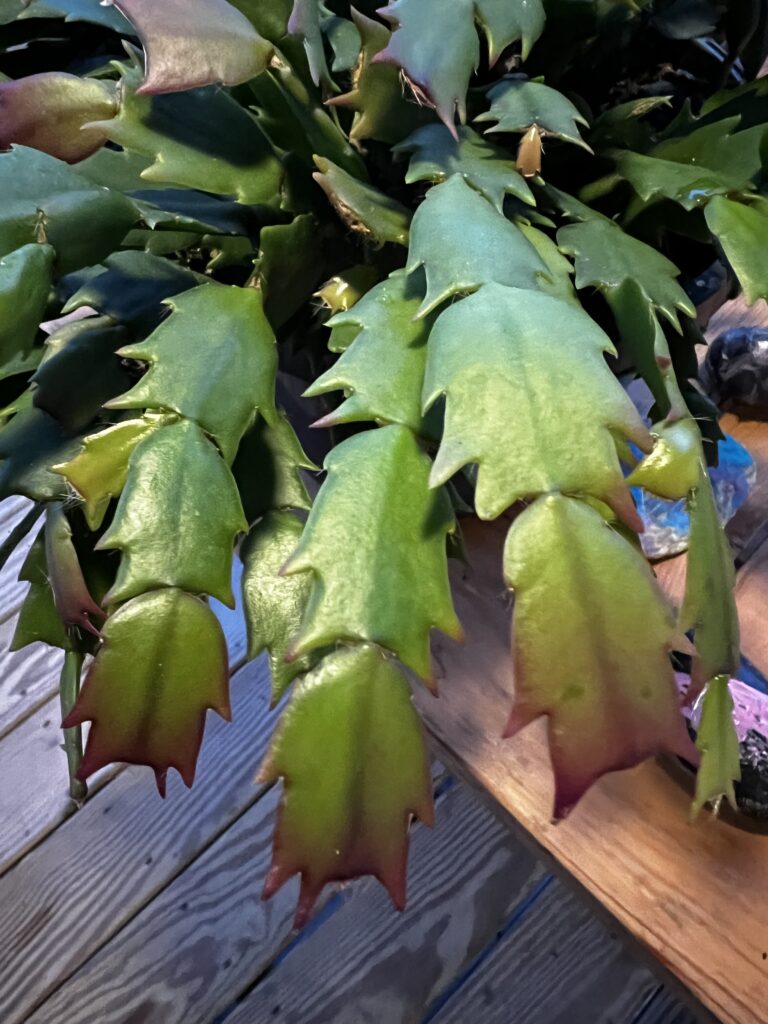
Insects or Pests
Insects, as predicted, are a source of stress for your plant, especially if they are small and invisible.
As previously stated, anthocyanins (that purple coloration!) are defensive pigments activated when stress arrives.
The good news is that your Christmas cactus purple color develops slowly, which gives you more time to react and solve the issue.
How do you keep pests away from your plants?
- Before leaving the plant store, double-check your plant. Choose a plant with no dark patches, webbing, or white dots that might be insects.
- Isolate your succulent from other plants that insects have damaged until you are sure they are gone.
- Check for little pests using a flashlight or phone zoom.
To treat pests: Combine a drop of dish detergent and one liter of water. Use this mix to wipe the leaves.
You may also use cinnamon as a natural insect repellent. Spread it on top of the soil.
The purple discoloration in the Christmas cactus indicates underlying issues affecting their health and well-being.
If you notice your Christmas cactus is purple, it’s time to take action and discover the reason to effectively deal with it.
Any more questions about Christmas cactus?
Thanks for reading!


Hey there, I'm Morgan, a houseplant enthusiast from sunny Charleston, South Carolina. Growing up surrounded by my mom's lush orchids and African violets, I discovered the magic of bringing nature indoors. Thanks to the pandemic, I delved deeper into houseplants, discovering their power to uplift moods and transform spaces. I'm here to spill all my secrets, helping you pick the perfect houseplant - and make it happy. Let's keep your plants alive, together! 😊

